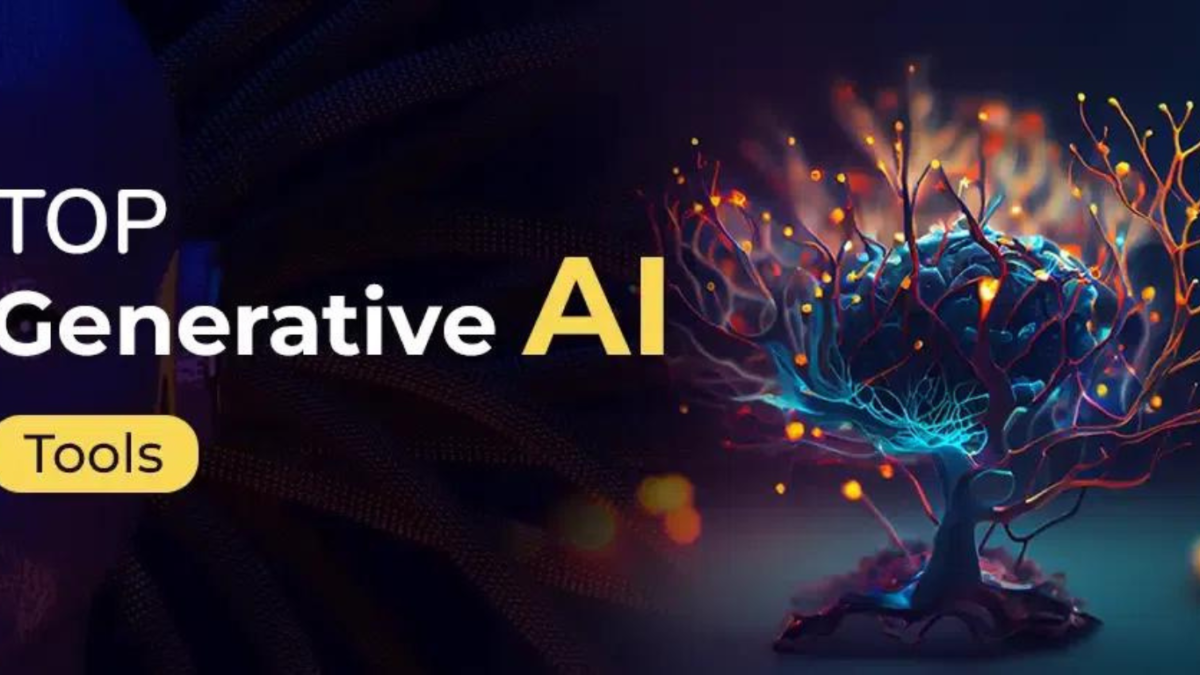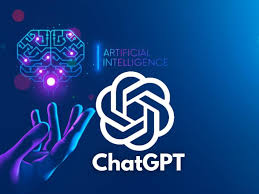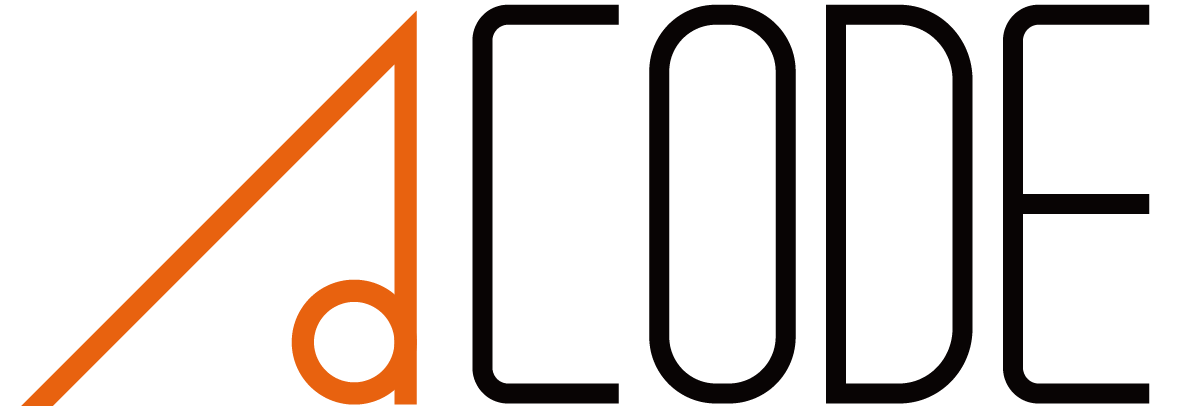Overview of Leading Generative AI Tools and Platforms

INTRODUCTION: –
The application of AI is expanding across several industries, including healthcare, banking, entertainment, and transportation, and its use is growing in popularity. Because of this, ethical issues are crucial to the development of AI. This development raises questions and presents moral problems that must be resolved to implement it properly.

Generative AI has been a game-changing technology in recent years, transforming everything from the arts and entertainment to the banking and healthcare sectors. These developments have ushered in a plethora of cutting-edge goods that use AI to produce, design, and help in previously unthinkable ways. As with any potent tool, significant ethical issues must be carefully addressed when deploying generative AI solutions.
Relevance of generative AI?
One subset of artificial intelligence, “generative AI” is concerned with teaching machines to create unique and imaginative material. Generative AI may learn from data and produce content on its own, in contrast to classical AI, which follows preset rules. Utilizing intricate algorithms and neural networks, this technology recognizes patterns and generates results that resemble the creative abilities of humans.
The importance of generative AI to completely transform sectors makes it significant. Generative AI techniques are opening doors to increased productivity, creativity, and innovation in a variety of fields, including software development and content creation. Businesses are using these tools more and more to improve productivity, cut down on human labor, and open up previously unthinkable opportunities.
The Development of AI-Generated Products
Technologies that employ machine learning algorithms to create content, mimic human creativity, and carry out difficult tasks on their own are referred to as generative AI. Many different applications are made possible by this technology:
1] Creative Industries: AI is being integrated into programs like Adobe Photoshop and Premiere Pro to help with image and video editing, producing content more quickly and accurately. 
2] Content Generation: AI can produce text and interact with people in natural language through chatbots, virtual assistants, and even content production platforms like GPT-3.
3] Research and Healthcare: By speeding up the diagnosis of illnesses and the creation of novel treatments, AI-driven drug discovery and diagnostics are revolutionizing the healthcare industry.
4] Financial Services: To increase efficiency, AI algorithms are utilized for algorithmic trading, risk assessment, and fraud detection.
5] Design and art: To push the bounds of creativity, designers, and artists are investigating generative AI as a means of producing original illustrations, designs, and visual art. According to a study, using generative AI in the design process increased the amount of creative and visually appealing design concepts generated by an astounding 75%.
6] Software development: The writing of code is changing as a result of generative AI. It helps developers by producing code snippets, enhancing software testing by finding about 30% more errors, and even recommending the best ways to solve coding problems. Higher code quality and quicker development cycles are the outcomes of these characteristics.
7] Gaming: Generative AI is being used by developers to construct dynamic virtual environments, produce in-game content, and modify gameplay in response to user activity. The overall gaming experience is improved by this dynamic adaptability, which leads to a 50% increase in player engagement and satisfaction.
8] Language translation: As generative AI technologies translate speech and text in real-time, communication between speakers of different languages is becoming easier. These tools promote international cooperation and understanding by translating text with an astounding 95% accuracy.
Top 05 platforms and tools for Generative AI
Let’s examine the top five – generative AI platforms and tools that are influencing technology today and in the future. We will look at the many benefits and numerical advances that each tool offers.
1.ChatGPT 
The dynamic language model ChatGPT, developed by OpenAI, is renowned for its exceptional capacity to generate realistic text. ChatGPT is incredibly versatile, with a talent for creating organic dialogues, answering questions, and supporting creative writing.
This invention is gaining traction in a variety of industries, including customer care bots, content development, and author brainstorming. Its natural language proficiency is a benefit that is continuously improved with upgrades.
However, problems include the possibility of prejudice and false information, as well as the inability to understand complex contextual subtleties fully.
Important characteristics:
- Produces writing that has a lot in common with human language.
- Participates in talks that seem genuine and organic.
- Offers comprehensive and perceptive responses to a variety of questions.
- Provides insightful advice and ideas for creative writing projects.
- Demonstrates the capacity to comprehend and react in ways that are appropriate for the context.
Use cases:
- Transformed customer service by enabling engaging chatbots for companies.
- Simplifies the writing process and improves the production of content, including marketing materials and articles.
- Assist writers in brainstorming sessions so they can overcome obstacles to creativity with fresh concepts.
2. Scribe
 Scribe, the AI writing aid, revolutionizes content creation. It is unmatched in its ability to create reports, summarize articles and support academic writing. By simplifying research and writing, this tool gives journalists, students, and professionals more power. Scribes are extremely productive when given customized duties, although complex creative writing may require human editing to ensure accuracy.
Scribe, the AI writing aid, revolutionizes content creation. It is unmatched in its ability to create reports, summarize articles and support academic writing. By simplifying research and writing, this tool gives journalists, students, and professionals more power. Scribes are extremely productive when given customized duties, although complex creative writing may require human editing to ensure accuracy.
Important characteristics:
- Committed AI writing helper.
- Produces material in a variety of forms and genres.
- Produces reports, summarizes publications, and supports academic writing.
- Aids in documentation and training.
- Make complex task documentation easier.
Use cases:
- Used for research and content development by professionals, journalists, and students.
- Helpful in producing documentation and graphics of the highest caliber.
- Makes the process of onboarding new employees easier for hiring managers and produces materials for new hires.
- By drafting comprehensive instructions, you may assist businesses with client onboarding and training.
3. Alpha Code:
 Generative AI is used by AlphaCode, a cutting-edge coding helper to empower developers. It can write code very well, solve bugs, and recommend the best programming solutions. For accelerated workflows, task automation, and language learning, developers use AlphaCode.
Generative AI is used by AlphaCode, a cutting-edge coding helper to empower developers. It can write code very well, solve bugs, and recommend the best programming solutions. For accelerated workflows, task automation, and language learning, developers use AlphaCode.
The application increases productivity, reduces mistakes, and promotes coding expertise. However because code creation relies on pre-existing programming patterns, complex scenarios may result in less-than-ideal code.
Important features:
- Uses cutting-edge generative AI to help with coding.
- Accommodates multiple paradigms and programming languages.
- Provides instantaneous fixes for bugs or code recommendations.
- Offers methods for code optimization.
- Offers tips for cooperative coding to help.
Use cases:
- Simplify coding procedures to expedite the completion of projects.
- Streamline tedious activities with automation to increase output.
- Encourage quick acquisition of new programming languages.
- Quickly fix bugs and coding problems.
4] GitHub Copilot
 GitHub Copilot transforms coding with built-in popular code editor integration and collaboration capabilities. It improves developer learning and productivity by providing explanations, context-based help, and code snippets. It’s a multipurpose tool that supports multiple programming languages, speeds up coding, and makes learning easier. However, caution is necessary because some of the generated code may require refinement and it significantly relies on external APIs for recommendations.
GitHub Copilot transforms coding with built-in popular code editor integration and collaboration capabilities. It improves developer learning and productivity by providing explanations, context-based help, and code snippets. It’s a multipurpose tool that supports multiple programming languages, speeds up coding, and makes learning easier. However, caution is necessary because some of the generated code may require refinement and it significantly relies on external APIs for recommendations.
Important features:
- Works well with well-known code editors like Visual Studio Code.
- Produces contextual information and explanations in addition to code snippets to help engineers.
- Enhances coding efficiency by offering prompt and pertinent code completion recommendations.
- Supports a wide variety of programming languages, making it suitable for a wide range of tasks.
- Learns from usage trends and adjusts to suit the preferences of each developer.
- Creative fixes by putting up different strategies.
Use Cases:
- Accelerates the coding process, allowing developers to meet deadlines more efficiently.
- Serves as a teaching tool for programmers to grasp new programming principles.
- Improves code quality by encouraging adherence to coding best practices and standards.
- Helps novices grasp codebases and make valuable contributions.
- Allows developers to explore novel solutions by providing alternate techniques.
5] GPT-4 
GPT-4 offers a significant step forward in AI language models, with improved text production across multiple domains. It excels in content development, assisting authors, marketers, and educators. Its wide application in natural language processing jobs enhances data analysis.
Success stories demonstrate their effectiveness in creating creative narratives and individualized conversational experiences. While GPT-4 exhibits enhanced quality and adaptability, caution is still advised owing to the possibility of mistakes and biases.
Key Features:
- Creates high-quality prose about a variety of topics.
- Create more clear and nuanced responses.
- Creates content that feels more natural and human-like.
- Addresses complex problems and tasks with higher precision.
- Allow users to control the tone, style, and characteristics of the generated text.
Use Cases:
- GPT-4 is essential for content production, providing authors, bloggers, and marketers with compelling content.
- Improves sentiment analysis and language understanding by empowering natural language processing activities.
- Serves as a creative writing partner, inspiring authors and screenwriters.
Generative AI has surely ushered in a new era of possibilities, in which machines actively participate in creative processes rather than simply replicating human actions. From producing code snippets to making music and even creating visual material, the tools and platforms mentioned in this blog demonstrate the astonishing advancement of technology.
As we move forward, we must appreciate both the potential and limitations of generative AI, embracing its power while also acknowledging the need for human monitoring and refinement. With these five cutting-edge generative AI tools, companies can achieve previously unheard-of levels of efficiency, creativity, and innovation.
